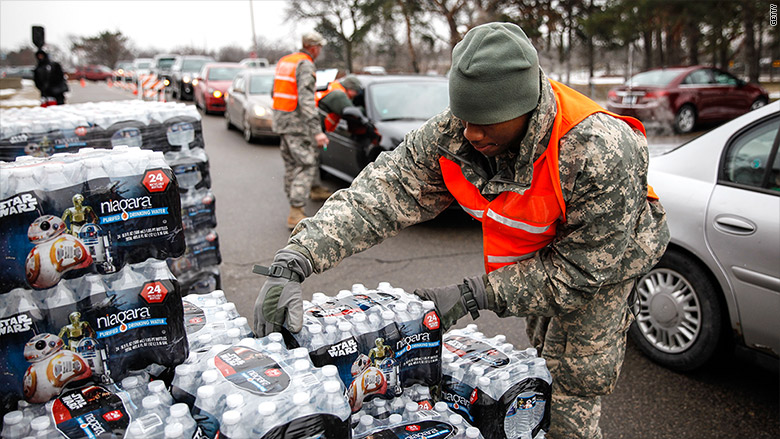
The New York Times' public editor released a scathing review of the newspaper's coverage of the Flint, Michigan, water crisis, noting sarcastically that the paper had the resources to cover such public issues as "lumbersexuals" and "breadfacing."
In her column Wednesday, Margaret Sullivan appears to side with readers who "are wondering why the news media, The Times included, didn't do more, earlier, when it might have made a real difference."
"Imagine if The Times really had taken on the Flint outrage with energy and persistence many months ago. With its powerful pulpit and reach, The Times could have held public officials accountable and prevented human suffering," Sullivan wrote.
The water in the blue collar city has been found to be toxic, contaminated by lead.
Sullivan considered the reasoning of Times deputy executive editor Matt Purdy, who noted that the paper devoted resources to covering other significant stories out of the Midwest, which he described as "one of the busiest regions of the country in terms of news."

Those stories included "the Tamir Rice case in Cleveland, problems in the Detroit schools, the aftermath of racial unrest in Ferguson, Mo., and Rahm Emanuel's re-election in Chicago."
Nevertheless, Sullivan considers what could have been.
"If we had poured more of the valuable time of reporters into Flint, we would not have gotten other stories," Purdy said.
Related: Walmart and partners donating 6.5 million bottles of water to Flint
Sullivan also noted that the Times ran a story last March about Flint's contaminated water, and followed it up with a brief and two other articles on the matter in October.
It wasn't enough, Sullivan wrote.
"The Times got off to a strong start with its initial Flint story in March," she said. "It was good to return to the subject in October; and this month's coverage has been thorough. But there could have been, and should have been, much more."
(CNN published two online stories in October reporting that Flint was hooking up to the Detroit water system after residents complained "about odd-colored water for months." In January, CNN's coverage has included near daily stories on all CNN platforms, including reports from Chief Medical Correespondent, Sanjay Gupta, and investigative correspondent Sara Ganim.)
Related: 65 GoFundMe accounts raising money for Flint water crisis
Acknowledging that the Times "can't be responsible for investigating every local problem," Sullivan questioned whether the paper lacked the necessary resources to tackle the story out of Flint.
"After all, enough Times firepower somehow has been found to document Hillary Clinton's every sneeze, Donald Trump's latest bombast, and Marco Rubio's shiny boots," she wrote. "There seem to be plenty of Times resources for such hit-seeking missives as 'breadfacing,' or for the Magazine's thorough exploration of buffalo plaid and 'lumbersexuals.' And staff was available to produce this week's dare-you-not-to-click video on the rising social movement known as 'Free the Nipple.'"
The situation in Flint has deteriorated in the 10 months since the Times' first article ran, culminating with Michigan Gov. Rick Snyder's declaration of a state of emergency earlier this month.
The lackluster response by the government has sparked outrage, with Snyder facing both local and national calls for his resignation.
Sign up for the Reliable Sources newsletter
Sullivan said the Times could have done more, too.
"If The Times had kept the pressure on the Flint story, the resulting journalism might not have made the 'trending' list — but it would have made a real difference to the people of Flint, who were in serious need of a powerful ally," she wrote.


